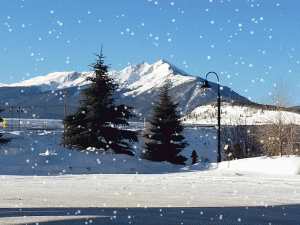During the Cybersecurity month presentation by John Sileo, I heard him mention something to the effect that the constitution does not guarantee privacy. Whether the constitution explicitly provides privacy protection seems to be unsettled and different legal scholars seem to have different opinions about this. Whether constitution guarantees it or not, we have all made serious assumptions about privacy and lived with those assumptions and in the digital age, this has become a serious issue. In 1999, Scott McNealy was quoted as saying ““You have zero privacy anyway. Get over it.” Despite the fact that this was pretty scary to hear, in the networked world, this has turned out to be correct.
Whenever you have a networked device that connects to the internet, it needs a unique identity, typically an IP number. I will keep things simple (because in reality they are very complicated as to how this works) by saying that in order to reach the destination, say a web site, information travels through multiple networked devices and all of them pass information from you to the destination. If your connection is encrypted (such as an SSL connection using https://), the content traveling back and forth is encrypted and generally hard for those intermediate devices to unravel, but there are certain pieces of information such as source and destination IP numbers and the “ports” on which they communicate which have to remain unencrypted. Ports are some predefined mechanism for different types of network communication to occur. This simply means there are a whole lot of devices and operators of those devices who have access to at least the IP numbers of who is communicating with who and what type of communication it is (typically based on port numbers). You need this information to properly route your packets back and forth. Requiring every intermediate device to unencrypt and re-encrypt this information is not practical and provides no additional security. And one we can generally agree that this is a serious privacy issue, especially, as we have found out that the government itself uses this information in ways that violates privacy!
(more…)
 I just came back from a road trip from our home in CT to Las Vegas. My son moved there and he needed a car so I drove with him. It was a great trip. My wife and I did an unforgettable road trip in 1984 from NY City to LA and back. The route that my son and I took to get to Vegas had a lot in common with the route that my wife and I took coming back east in 1984. The variation in the landscape from Ohio to Nevada is amazing. The most breathtaking part for me is always the transition from Colorado to Utah to Arizona and Nevada. Whereas the time scale in which the nature changes is many orders of magnitudes slower, the technology around it is changing rapidly. But then, technology is not changing as rapidly in certain places, even in this country, one of the most advanced ones in the world!
I just came back from a road trip from our home in CT to Las Vegas. My son moved there and he needed a car so I drove with him. It was a great trip. My wife and I did an unforgettable road trip in 1984 from NY City to LA and back. The route that my son and I took to get to Vegas had a lot in common with the route that my wife and I took coming back east in 1984. The variation in the landscape from Ohio to Nevada is amazing. The most breathtaking part for me is always the transition from Colorado to Utah to Arizona and Nevada. Whereas the time scale in which the nature changes is many orders of magnitudes slower, the technology around it is changing rapidly. But then, technology is not changing as rapidly in certain places, even in this country, one of the most advanced ones in the world!
We left right after the big snow storm last thursday and the roads were pretty bad in CT as well as most of NY. Weather prediction technologies have become fairly sophisticated and we knew with fair certainty when the snow will end, so we could plan accordingly. The very first talk I gave in this country was a required talk for all PhD students in Chemistry. The subject of the talk is required to be not directly related to Chemistry. Because of my interests in computational methods, I chose the topic of weather modeling. The models that I spoke about at that time were being developed in National Oceanic and Atmospheric Administration. In simple terms, it involves solving complex differential equations and evaluating predictive values using advanced numerical methods. This requires prior values of many variables, dividing up the atmosphere into cubes and solving the equations within the cubes. Of course, you have to make sure that the values at the edges of the cubes are within the margin or error. Humongous number of calculations were done using the supercomputers (probably slower than the most powerful PCs of today) available then. Of course, the weather accuracy depended on how good the prior values are (these were reported by various weather stations) and how small a cube is. The smaller the cubes are, the better the accuracy can be, but it requires exponentially more computing power. Anyways, before I get carried away too much – even the simplest model in 1978/1979 required so much computer time that the predictions arrived 5 days after the weather had passed. Look where the technology has taken us now!
(more…)
